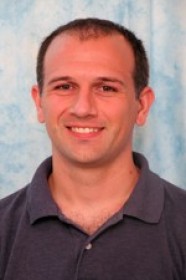
PhD Thesis Proposal
June

11:00 am to 12:00 am
Event Location: NSH 1305
Abstract: Robots today have the capability to collect terabytes of data about their environment and travel kilometers in a single day, yet they are still constrained by one fundamental resource: time. Time limits the number of samples a robot can collect, sites it can analyze, and data it can return for review, so it is imperative the rover makes intelligent actions when it comes to choosing when, where, and what to sample, a process known as adaptive sampling.
In this work we propose an approach to modeling and adaptive sampling. We consider a scenario in which a rover collects a set of a set of noisy, quickly-gathered measurements and analyzes it to select targets for longer follow-up operations. These two types of measurements might come from different devices, such as in an agricultural scenario where images of leaves are quickly analyzed to decide whether or not to follow up with a drawn-out yet informative spectra, or they might come from the same device, such as evaluating a quick sensor measurement and increasing the integration time of a follow-up measurement as desired. Our goal is to vastly decrease the amount of time needed to understand a scene by minimizing the number of samples we have to collect and the time spent collecting each sample.
We propose an approach in which we make estimates of models of materials within a scene, then perform follow-up measurements that validate these models and explore areas in which they do not generalize well. We have no prior knowledge about the number of distinct materials within scenes or how similar they are to materials we’ve observed before.
In addition to choosing where to sample, we also propose methods for deciding how long to collect measurements or how many measurements to take. Using the models we have estimated in our first step, we decide how intensively we analyze further samples from those models and whether or not it is profitable to continue sampling at that location. We test this work on three main scenarios at vastly different scales, although the approach generalizes well to a number of other domains. First, we consider a rover analyzing low-resolution orbital data and selecting a path that maximizes the diversity of sampling locations. Second, we consider the scenario in which a rover collects an image and chooses objects within that image for further sampling. Finally, we consider the scenario in which a sensor, such as a spectrometer, collects quick and noisy measurements of a small patch of material, the selects a subset of sampled points for further analysis.
Committee:David Wettergreen, Chair
George Kantor
Jeff Schneider
David Thompson, Jet Propulsion Laboratory